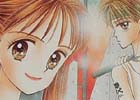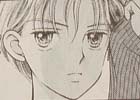Kodomo no Omocha
| Kodocha: Sana’s Stage | ||
| Also Known As: Child’s Toy, KnO | ||
| Genre: Comedy/Romance | ||
| Length: 10 Volumes | ||
| Allegiance: Shueisha | ||
| Mangaka: Obana Miho | ||
| Vintage: 1994-1999 | ||
| Intelligence Agency Report by: Kuzu Ryu Sen | ||
| Kurata Sana is a rather unique person, no matter how one looks at it. As a girl, her extreme optimism, rash behaviour, and limitless energy set her apart. As an actor, it’s her charm, radiance, and how much she enjoys every role. Recently though, all these attributes, along with Sana, are being put to the test by Hayama Akito, the resident bully of Class 6-3. He drives teachers insane, has all the boys in the palm of his hand, and worst of all, never displays any emotion and barely says a word. Will Sana overcome this challenge? Or will she succumb to Hayama Akito, super jerk? | ||
|
|
||
| Research Agent Report by: Kuzu Ryu Sen | ||
| Plot Characters Impact Visual |
8.50 9.25 9.50 8.75 |
|
| Overall | 9.00 | |
| (not an average) | ||
| Komodo no Omocha has developed a reputation for zany humour and crazy fast paced scenes in both manga and anime form. However, the Kodocha manga is far from a one-trick pony, featuring a latter half that is touching, deep, and thrilling all at the same time, without having to excessively resort to wacky antics.
Kodocha’s cast at first glance appears to be fairly clichE You have the female lead, the poker faced bishounen, the nerdy best friend, and so on, but as the story continues, these characters are all given back stories that show just what had occurred in the past to cause their present personalities. As the story develops, more characters are introduced. While some of these don’t get any real attention once their respective arcs are over, very few if any are dropped all together. A minor quibble though: some of the secondary characters (Asako and Aya particularly) could have used some more time in the spotlight. Even though the side characters get a fair deal of attention, the real stars of the show are Akito and Sana. The Akito and Sana that we see in volume one are markedly different than the Akito and Sana that we see in volume ten, and yet, also very much still the same person. Obana-sensei has delivered a masterful display of developing characters without warping their personalities. Part of this process is due to the plot that she chose: one of daily life interjected with significant events. While this might seem fairly mundane, the latter half of the manga contains quite a few surprising twists and events, ensuring that the manga ends dramatically, emotionally, and most important, powerfully. Obana-sensei’s art is nothing to shrug at either. While some of the shading is too sudden, and some of the hatching stands out too much, her art is clean, with nice lines and an above average level of attention to detail. One subtle thing is that her character designs actually do change as the series progresses, and whether inadvertent or not, the changes reflect any shift in the personality of the respective character. For example, Sana’s slightly bulging cheeks are replaced by the later episodes with a sleeker, straighter, more feminine look. Kodomo no Omocha truly managed to capture the essence of what happens when children are forced to grow up too fast, a demon that Japanese audiences are all too familiar with. Despite the comedic title and upbeat first few volumes, Kodocha turned into a poignant drama with the greatest of ease. Lovable characters, an excellently paced story, a stellar romance, and a powerful theme. What more could you ask for? |
||




